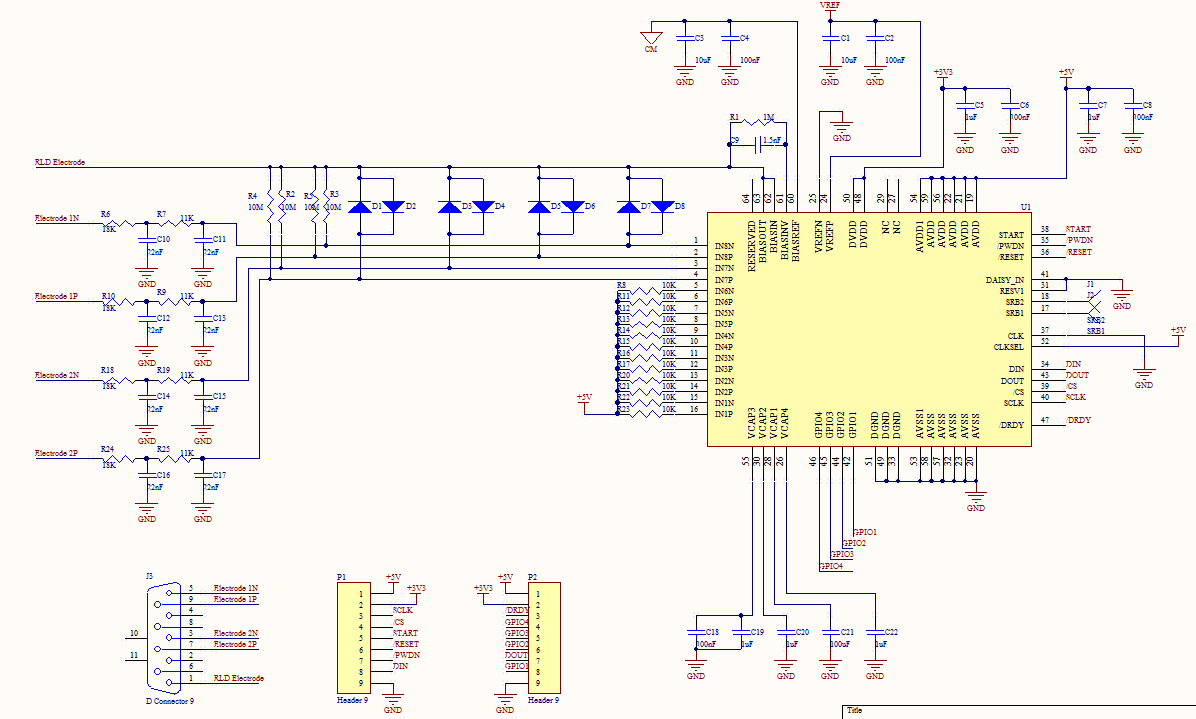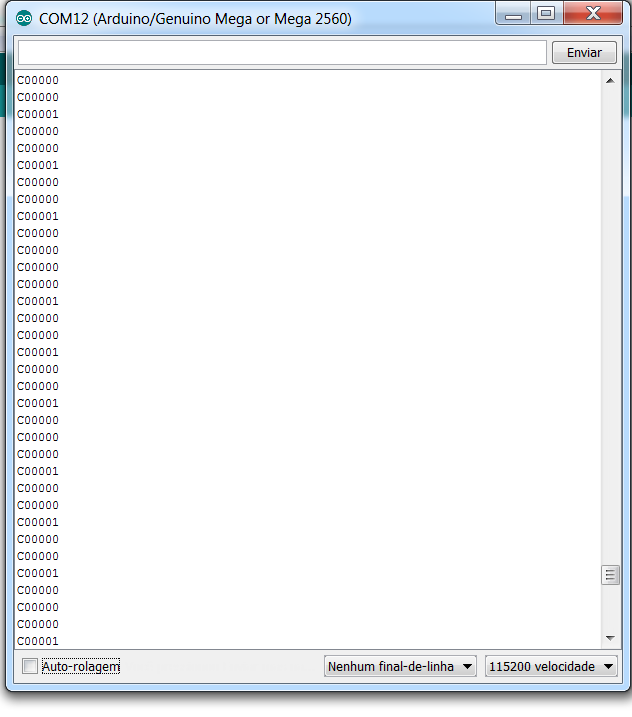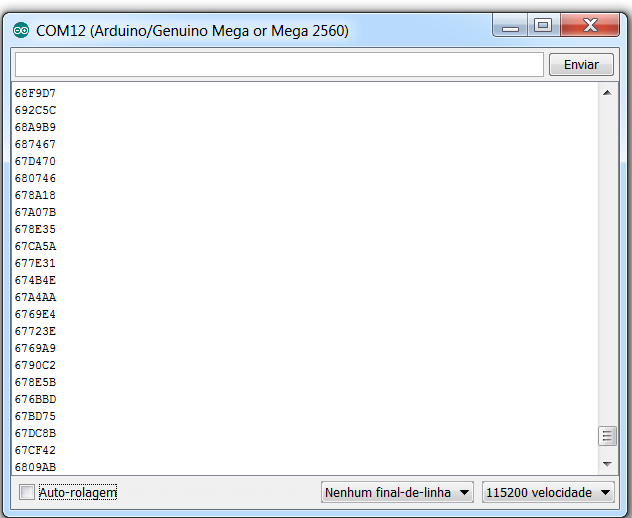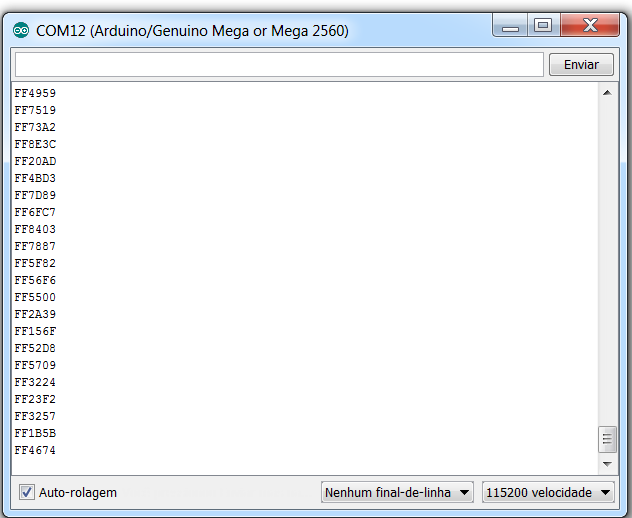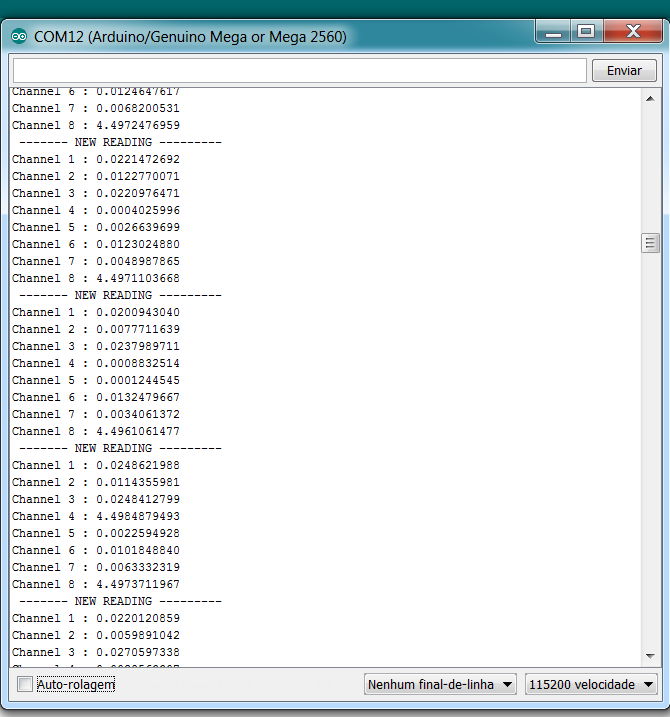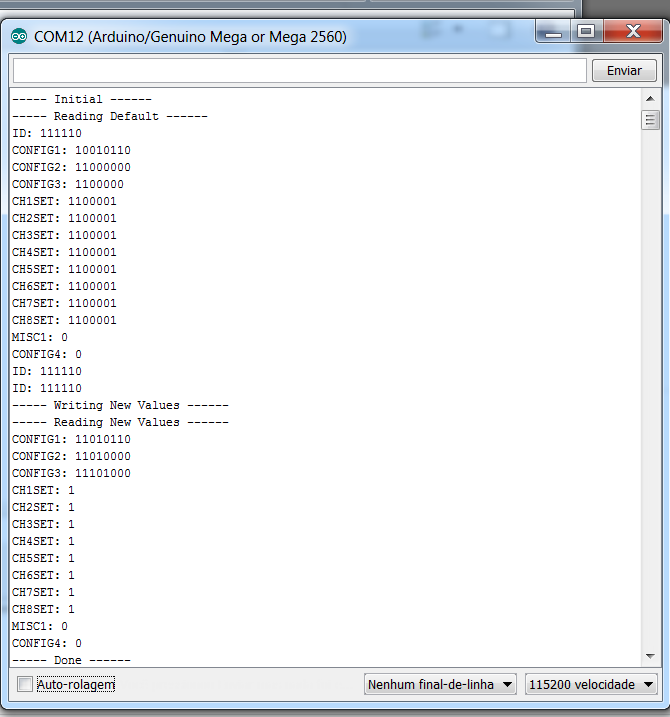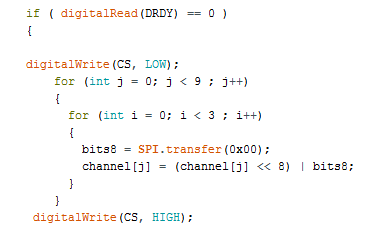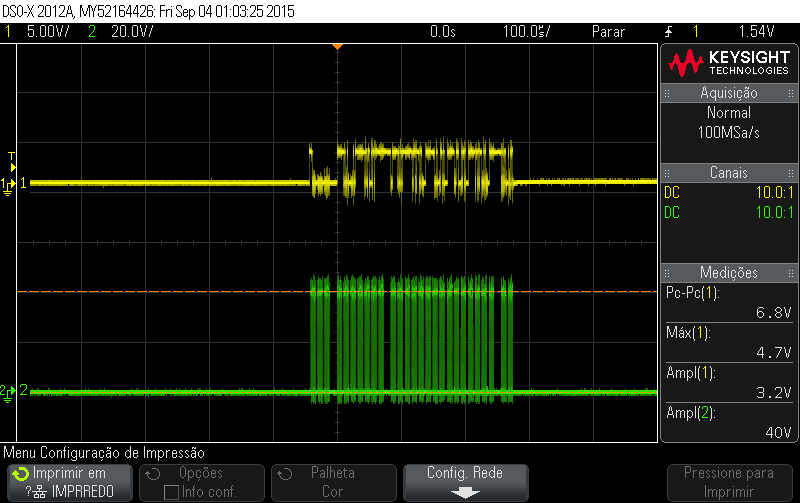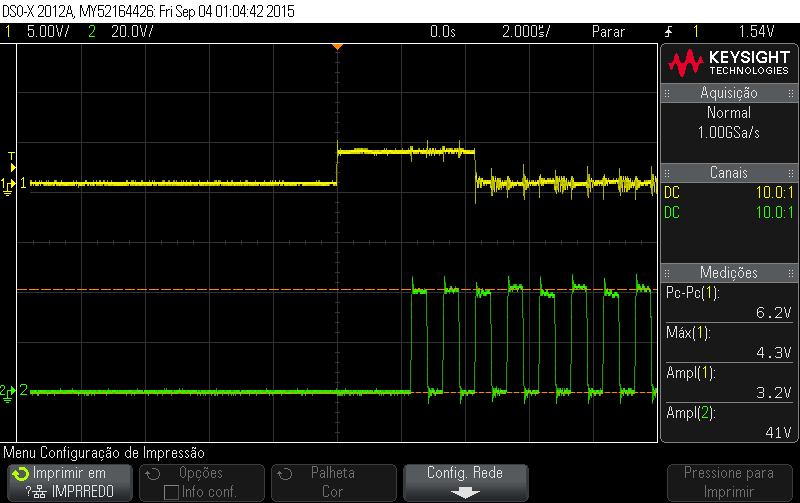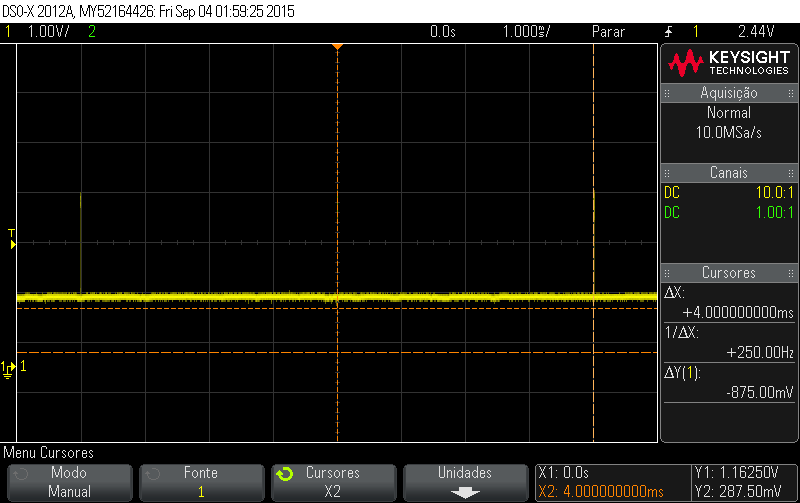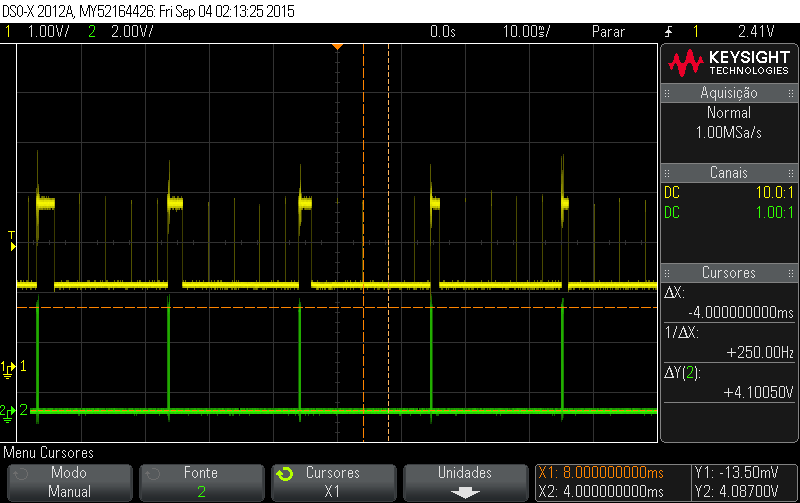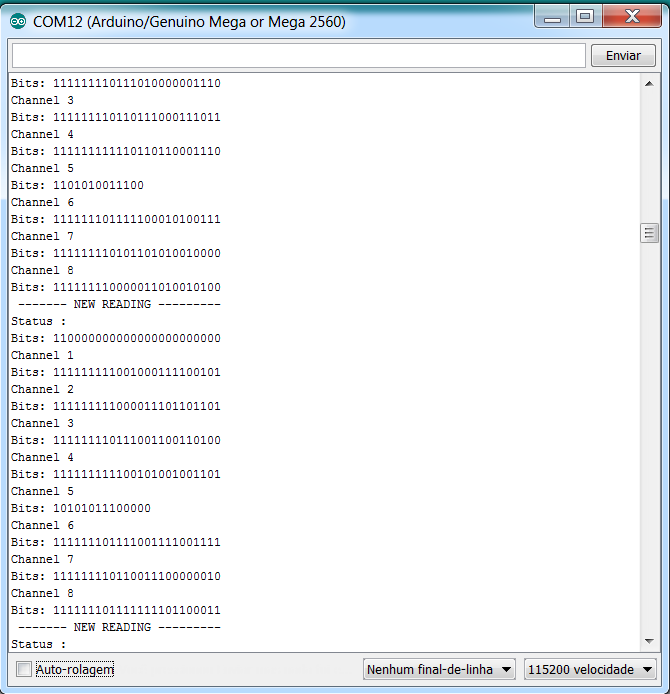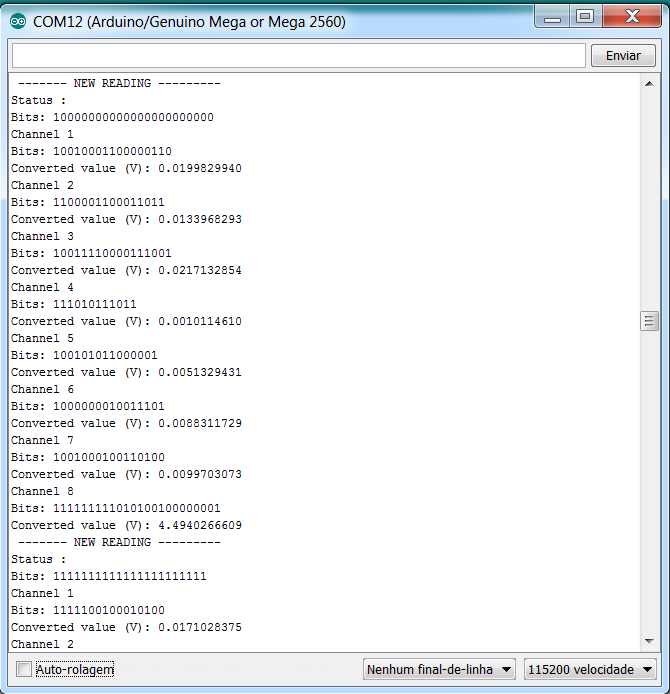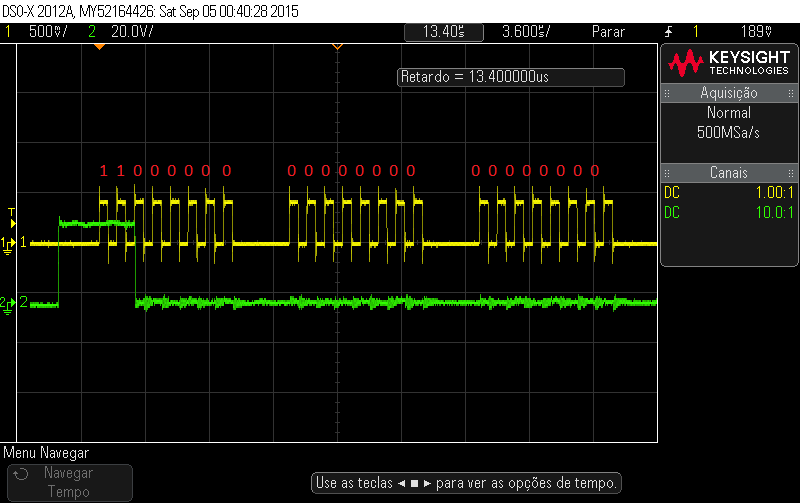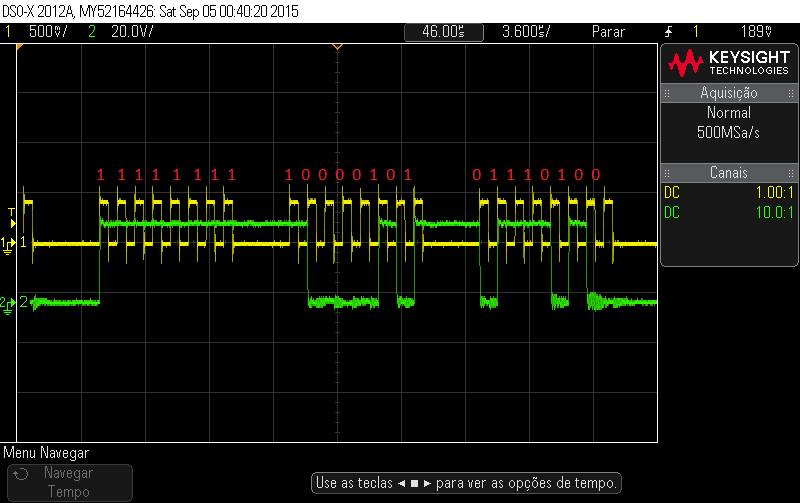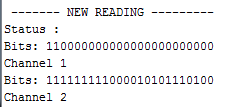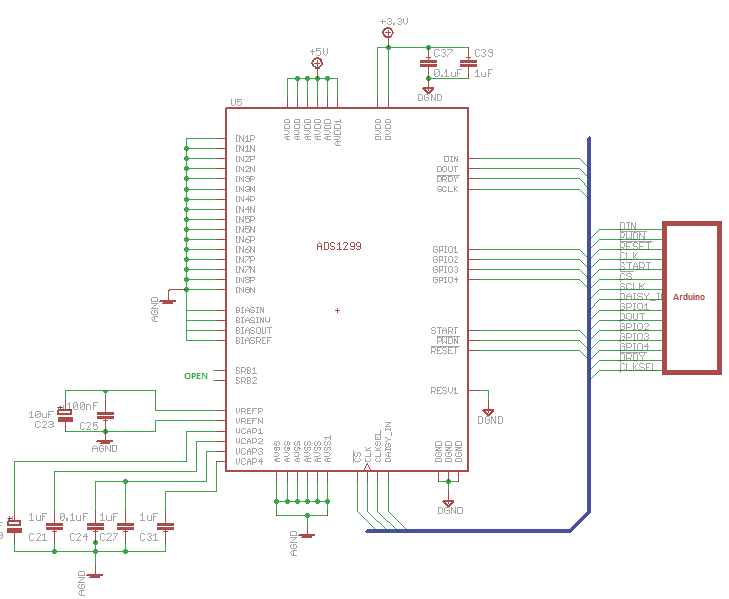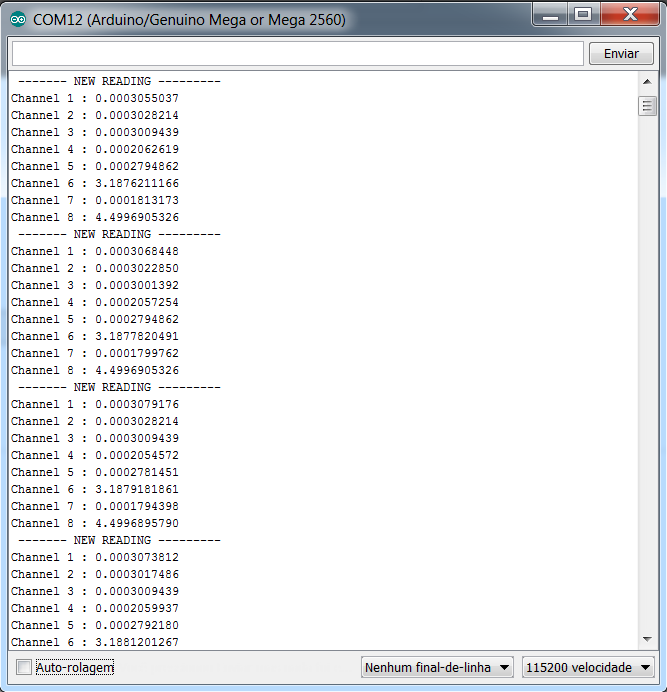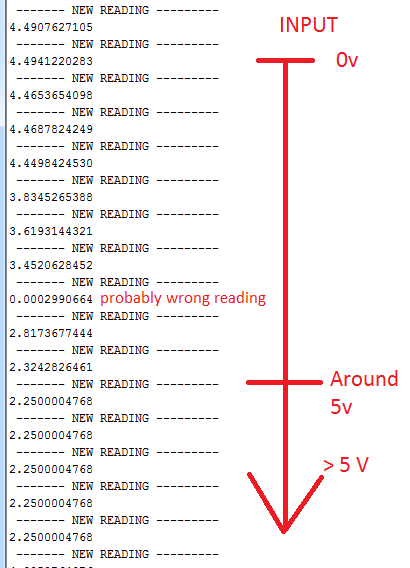Hello!
I am working with the ADS1299 and currently I implemented the whole circuit in a protoboard.
I am using unipolar configuration and used the following schematic (and also datasheet of course)
I am using ARDUINO MEGA 2560 in order to communicate with it. The whole thing seems to be working fine. I can read and write registers, I can actually read different values for different settings, etc...
Even though I can go from one input method to another (internal testing, temperature, input short, etc...), the values aren't fine.
Another thing that I noticed is that my status register often gets one bit that it shouldn't (Should stay at C00000, but sometimes it becomes C00001).
Here are some screenshots using arduino serial to get the values. I actually get STATUS + 8 channels data, that is working fine.
Each reading happens at each millisecond.
But on the screenshots only printed channel 1.
Status register:
Temperature reading: this is how I suppose things are working fine. When in temperature reading mode,
the values are almost constant and aren't very high (unlike the other modes).
Test signal:
Normal input electrodes (with both CHN1P and CHN1N grounded):
Btw, Input short gives me roughly the same output.
So... I am really lost here. I've tried lots of different schematics, but I always get values that are waaay to high!
I've already checked thousands of times, and my internal reference is 4,5V, DVDD 3v and AVDD 5v.
Could it be power line noise (considering I am using no batteries at all?) or faulty VCAPs ?
Here is a screenshot of my setup (I know it isn't the more appropriate approach, but this is just a chip validation):
Thanks


